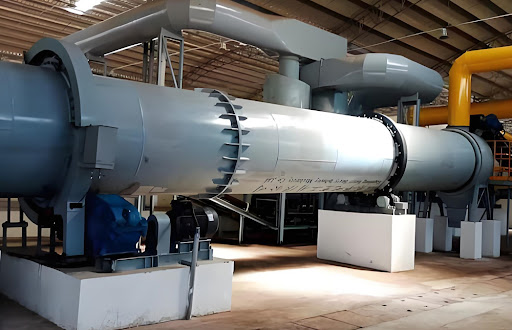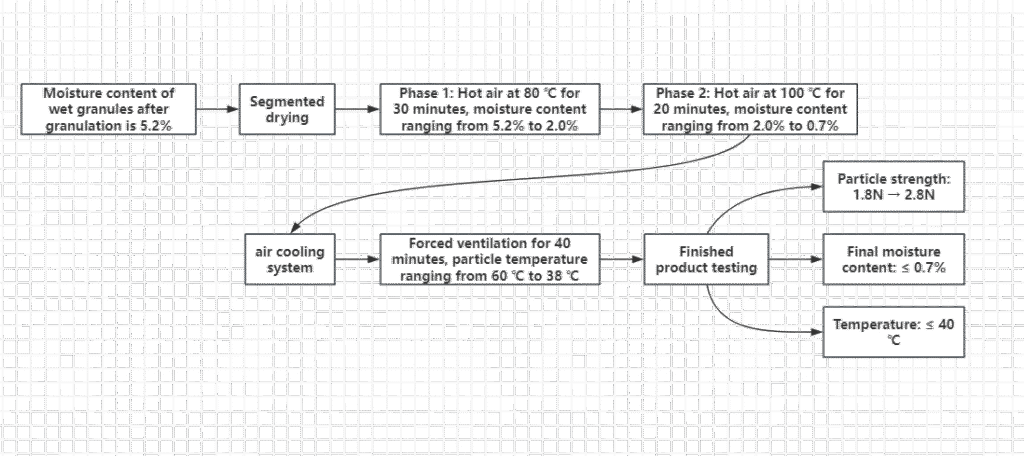
NP8-40 compound fertilizer (8% nitrogen and 40% phosphorus in P₂O₅) can significantly improve fertilizer efficiency and applicability through deep processing. This article analyzes its deep processing process and shows the transformation from raw materials to efficient fertilizers.
1. Raw material preconditioning: build a solid foundation
(1)Purification of nitrogen and phosphorus raw materials
Nitrogen source: Choose high-purity urea (nitrogen ≥46.4%) or ammonium nitrate (nitrogen ≥33.5%), and remove impurities through re-crystallization, and the Urea dimer content is reduced to below 0.3%.
Phosphorus source: Use mono-ammonium phosphate (P₂O₅≥55%) or ammonium phosphate (P₂O₅≥53%) to dry at low temperature until moisture is ≤1.0%, and crush to 80 mesh fineness.
(2)Preconditioning of auxiliary materials
Anti-caking agent: Food grade talc powder (particle size ≤10μm) is sterilized at 120℃ for later use.
Sustained release agent: epoxy resin or sulfur crush to 50 mesh and make a suspension with water 1:3.
Soil conditioner: Acid soil is suitable for calcined dolomite powder (calcium ≥30%) and grind it into a 100 mesh sieve.
2. Core deep processing link: precision technology
(1)High temperature melting reaction
The nitrogen and phosphorus raw materials are put into the melting reactor in proportion, and the reaction is stirred at 180-200℃ for 1-2 hours to form urea phosphate crystals and enhance nutrient activity. Nitrogen protects and prevents nitrogen volatility, and regulates temperature and pH value online (5.5-6.5).
(2)Granulation process upgrade
Rotating drum granulation: The melted slurry and auxiliary materials are put into the rotating drum, spray water at a speed of 15-20r/min to form 2-4mm particles, with a control strength ≥2.5N.
Example diagram

Extrusion and granulation: The dry material (moisture ≤2%) is extruded into strips by a twin-screw machine high pressure (15-20MPa), and the particle size uniformity after pelleting reaches more than 95%.
Envelope granulation: After granulation, the sustained-release suspension is sprayed with a Suspended bed, and dried at 60°C in hot air to form a 0.1-0.2mm envelope, and the nitrogen release period is extended to 60-90 days.
| Granulation process | Device | Particle size | Strength | Scénarios applicables |
| Drum granulation | Rotary Drum Granulate | 2-4mm | 2.8N | General field crops |
| extrusion granulation | Twin screw extrusion granulate | 3mm±0.2mm | 3.5N | High concentration demand plot |
| Capsule granulation | Suspended bed coating machine | 2-4mm | 2.6N | Fruit trees, vegetables, and other crops with long cycles |
(3)Low temperature drying and cooling
Stage drying: remove surface water at 80℃ for 30 minutes, remove internal water at 100℃ for 20 minutes, and final moisture content is 0.5%-1.0%.
Air-cooled to below 40℃ to prevent agglomeration and increase particle hardness.
Process diagram of drying and cooling production line

3. Quality control: Ensure compliance with standards
(1)Key indicator detection
Nutrients (nitrogen 8.0%±0.3%, phosphorus 40.0%±0.5%), physical properties (strength, particle size) and heavy metals (lead ≤5mg/kg, cadmium ≤0.5mg/kg) were measured in each batch, which was in accordance with GB/T 15063-2020.
(2)Small and pilot tests
Small test: Test the dissolution and release curve of fertilizer in different soils.
Pilot: Comparative planting in fields to verify the impact on crop growth.
4. Advantages of deep processing
Improved fertilizer efficiency: Stabilized Nutrients nitrogen and phosphorus have increased the absorption rate from 30%-40% to 50%-60%, and wheat production in phosphorus-deficient soils has increased by 15%-20%.
Wide applicability: The anti-caking type will not caking for 3 months at 80% humidity, and the sustained-release type will meet the needs of long-term crops.
More environmentally friendly: The envelope reduces nitrogen leaching loss by more than 30%, and adding conditioning agents can improve soil pH.
5.Conclusion
NP8-40 Deep processing of compound fertilizers is a multi-link collaborative optimization process that can convert basic formulas into efficient fertilizers. Continuously upgrading the process can better help crop quality and farmers increase their income in modern agriculture.
